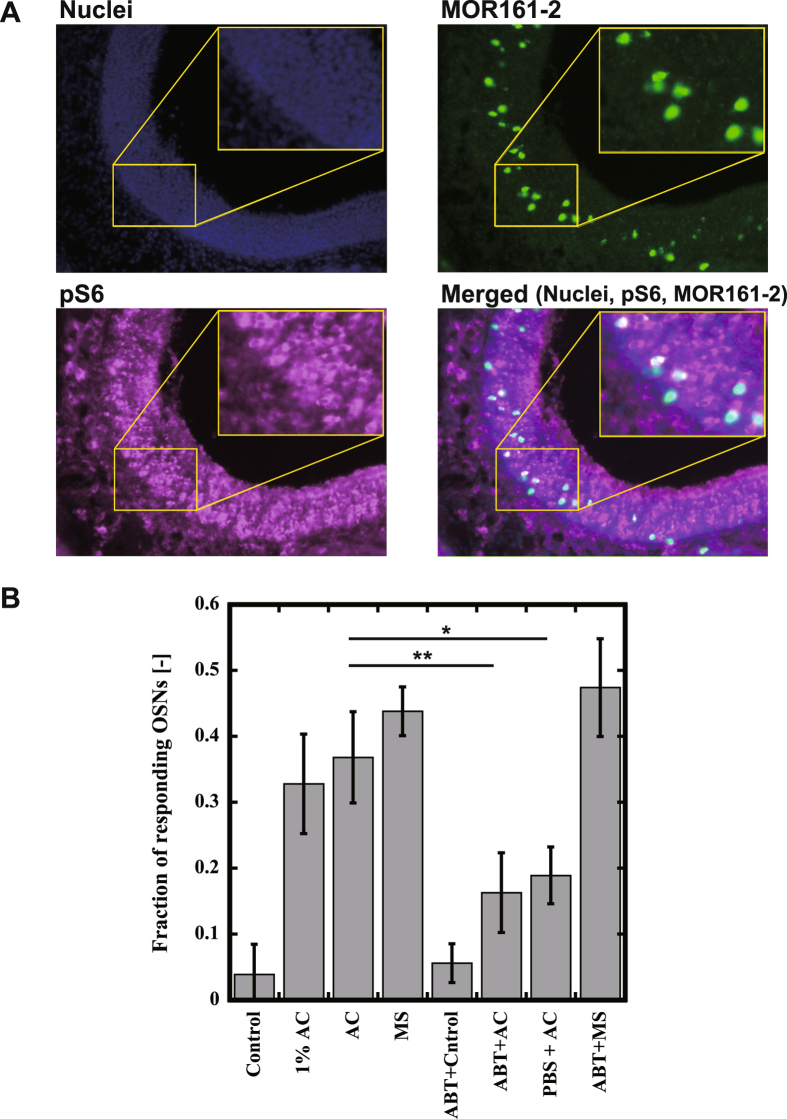Figure 5.
Immunofluorescence and RNA in situ hybridization of mouse OE for activation with acetophenone and methyl salicylate. (A) Mice were stimulated by a piece of filter paper spotted with 10 µL odorant and sacrificed to stain the olfactory epithelium. pS6 and MOR161-2 were detected by Immunofluorescence and RNA in situ hybridization, respectively. (Nuclei) nuclei of olfactory sensory neurons, (MOR161-2) RNA in situ hybridization for MOR161-2, (pS6) Immunofluorescence for pS6, and (Merged) Merged image of Nuclei, MOR161-2 and pS6. And then the stained sections were observed by fluorescence microscope. Images were 20× magnification. (B) The ratio of the responding OSNs, identified using anti-S6 antibody, to the total MOR161-2 expressing cells was calculated. The means ± standard deviation of three separate experiments are shown. The statistical significance was assessed using a t test (*P < 0.05, **P < 0.01). 1% AC, 1% acetophenone; AC, acetophenone; MS, methyl salicylate; Control, purified water without odorant. PBS, with washing nasal cavity by PBS; ABT, with washing nasal cavity by PBS containing ABT. Three mice were used for each stimulation condition. At least four sections were analyzed for each stimulation condition.

